The Effect of Collector Azimuth on Inter-Row Shading in Photovoltaic Fields—A Comprehensive Point of View
Abstract
1. Introduction
2. Methods and Materials
2.1. Collectors Deployed on Horizontal Planes
2.1.1. Maintenance Criteria for Inter-Row Spacing
2.1.2. No-Shading Criteria for Inter-Row Spacing on Winter Solstice at Solar Noon
2.1.3. Criterion for Inter-Row Spacing on day December 21
2.1.4. Inter-Row Spacing and Shading Losses in Optimal PV Systems Designs
2.2. Collectors Deployed on Sloped Planes Facing the South
Criterion for Inter-Row Spacing on day December 21
2.3. Collectors Deployed on Sloped Planes Facing the North
Criterion for Inter-Row Spacing on day December 21
3. Results
3.1. Maintenance Criteria for Inter-Row Spacing, N
3.2. No-Shading Criteria for Inter-Row Spacing and Shading on Winter Solstice at Solar Noon,
3.3. Criterion for Inter-Row Spacing on day December 21
3.3.1. Latitude N
3.3.2. Latitude N
3.4. Inter-Row Spacing and Shading Losses in Optimal PV Systems Designs
3.4.1. Latitude N
3.4.2. Latitude N
3.5. Collectors Deployed on Sloped Planes Facing the South
3.5.1. Constant Inter-Row Spacing-Maintenance Spacing, m, N
3.5.2. Criterion for Inter-Row Spacing on day December 21, N
3.6. Collectors Deployed on Sloped Planes Facing the North
3.6.1. No-Shading Criteria for Inter-Row Spacing and Shading on Winter Solstice at Solar Noon, N
3.6.2. Criterion for Inter-Row Spacing on December 21,
4. Discussion and Conclusions
- For collectors deployed on horizontal planes, the inter-row distance may be determined nearly equally by the “winter solstice rule” (for example, m) or by the criterion , up to collector azimuth ; however, the inter-row spacing, based on criterion, then increases rapidly for , resulting in large spacing; however, less shading losses are obtained;
- Reduction in shading losses is obtained by applying the new criterion for collector deployment with an azimuth ; see Figure 9, for example;
- The inter-row spacing for collectors deployed on south-facing slopes is usually determined by the distance required for maintenance; for example, m;
- Collectors may be deployed on northern slopes with acceptable spacing on account of increasing shading;
- Optimal PV system designs for maximum annual incident solar energy tend to result in minimum inter-row spacing (for example m—maintenance distance) for all azimuth angles of the collectors in order to increase the number of collector rows in the given solar field, and hence, to obtain high incident energies;
- At the latitude N, it was assumed that an inclination angle , and collector width m for comparison with the results for N. A low percentage of shading losses is obtained for criterion due to large inter-row spacing.
Author Contributions
Funding
Data Availability Statement
Conflicts of Interest
References
- Aronescu, A.; Appelbaum, J. Design optimization of photovoltaic solar fields-insight and methodology. Renew. Sustain. Energy Rev. 2017, 76, 882–893. [Google Scholar] [CrossRef]
- Kerekes, T.; Koutroulis, E.; Sera, D.; Teodorescu, R.; Katsanevakis, M. An optimization method for designing large PV plants. IEEE J. Photovolt. 2013, 3, 814–822. [Google Scholar] [CrossRef]
- Sánchez-Carbajal, S.; Rodrigo, P.M. Optimum Array Spacing in Grid-Connected Photovoltaic Systems considering Technical and Economic Factors. Int. J. Photoenergy 2019, 2019, 1486749. [Google Scholar] [CrossRef]
- Bakhshi, R.; Sadeh, J.; Mosaddegh, H.-R. Optimal economic designing of grid-connected photovoltaic systems with multiple inverters using linear and nonlinear module models based on Genetic Algorithm. Renew. Energy 2014, 72, 386–394. [Google Scholar] [CrossRef]
- Kornelakis, A.; Marinakis, Y. Contribution for optimal sizing of grid-connected PV-systems using PSO. Renew. Energy 2010, 35, 1333–1341. [Google Scholar] [CrossRef]
- Alsadi, S.Y.; Nassar, Y.F. A general expression for the shadow geometry for fixed mode horizontal, step-like structure and inclined solar fields. Sol. Energy 2019, 181, 53–69. [Google Scholar] [CrossRef]
- Varga, N.; Mayer, M.J. Model-based analysis of shading losses in ground-mounted photovoltaic power plants. Sol. Energy 2021, 216, 428–438. [Google Scholar] [CrossRef]
- Barra, O.; Conti, M.; Santamata, E.; Scarmozzino, R.; Visentin, R. Shadows’ effect in a large scale solar power plant. Sol. Energy 1977, 19, 759–762. [Google Scholar] [CrossRef]
- Appelbaum, J.; Bany, J. Shadow effect of adjacent solar collectors in large scale systems. Sol. Energy 1979, 23, 497–507. [Google Scholar] [CrossRef]
- Jones, R.E., Jr.; Burkhart, J.F. Shading effect of collector row tilt toward the equator. Sol. Energy 1981, 26, 563–565. [Google Scholar] [CrossRef]
- Budin, R.; Budin, L. A mathematical model for shading calculations. Sol. Energy 1982, 29, 339–349. [Google Scholar] [CrossRef]
- Ma, X.-S.; Yao, G.-H.; Ye, L.-J.; Zhi, X.-F.; Zhang, S.-M. Distance calculation between photovoltaic arrays fixed on sloping ground. J. Comput. Methods Sci. Eng. 2015, 15, 107–116. [Google Scholar] [CrossRef]
- Castellno, N.N.; Parra, J.A.G.; Valls-Guirado, J.; Manzono-Agugliaro, F. Optimal displacement of photovoltaic array’s rows using a novel shading model. Appl. Energy 2015, 144, 1–9. [Google Scholar] [CrossRef]
- Copper, J.; Sproul, A.; Bruce, A. A method to calculate array spacing and potential system size of photovoltaic arrays in the urban environment using vector analysis. Appl. Energy 2016, 161, 11–23. [Google Scholar] [CrossRef]
- Dhimish, M.; Silvestre, S. Estimating the impact of azimuth-angle variations on photovoltaic annual energy production. Clean Energy 2019, 3, 47–58. [Google Scholar] [CrossRef]
- Bany, J.; Appelbaum, J. The effect of shading on the design of a field of solar collectors. Sol. Cells 1987, 20, 201–228. [Google Scholar] [CrossRef]
- Available online: https://www.wolframalpha.com/ (accessed on 30 March 2023).
- Swaid, S.; Appelbaum, J.; Aronescu, A. Shading and Masking of PV Collectors on Horizontal and Sloped Planes Facing South and North—A Comparative Study. Energies 2021, 14, 3850. [Google Scholar] [CrossRef]
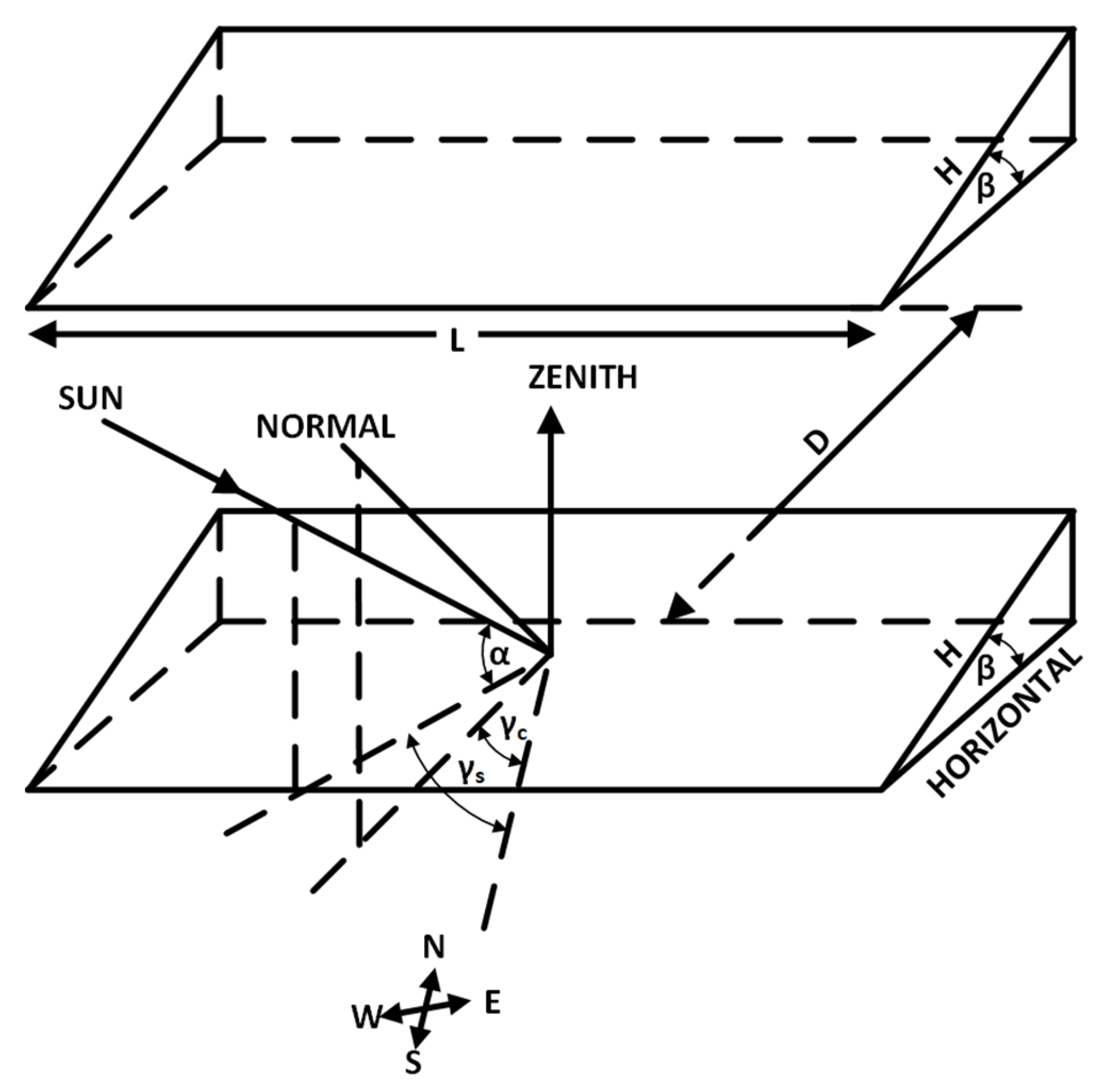
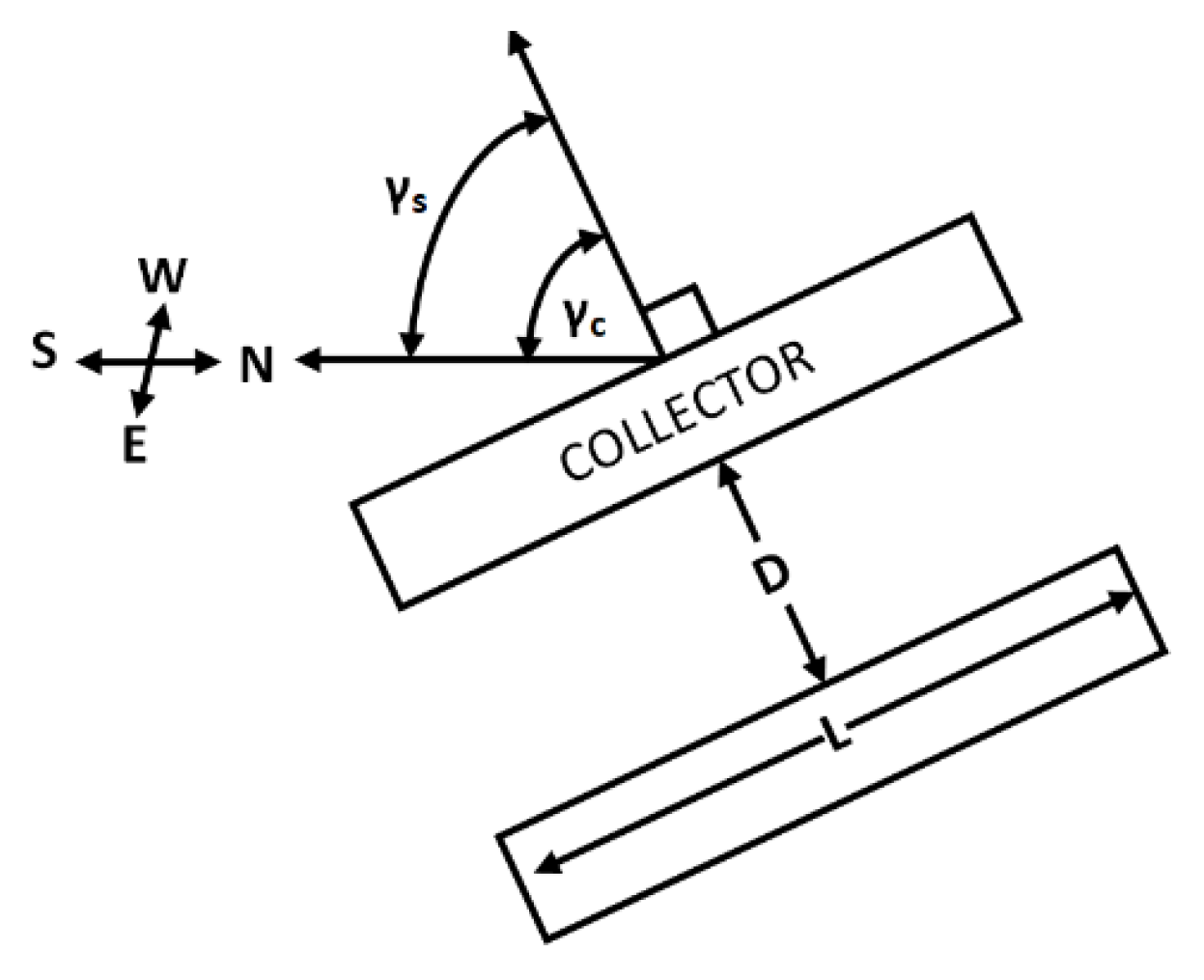
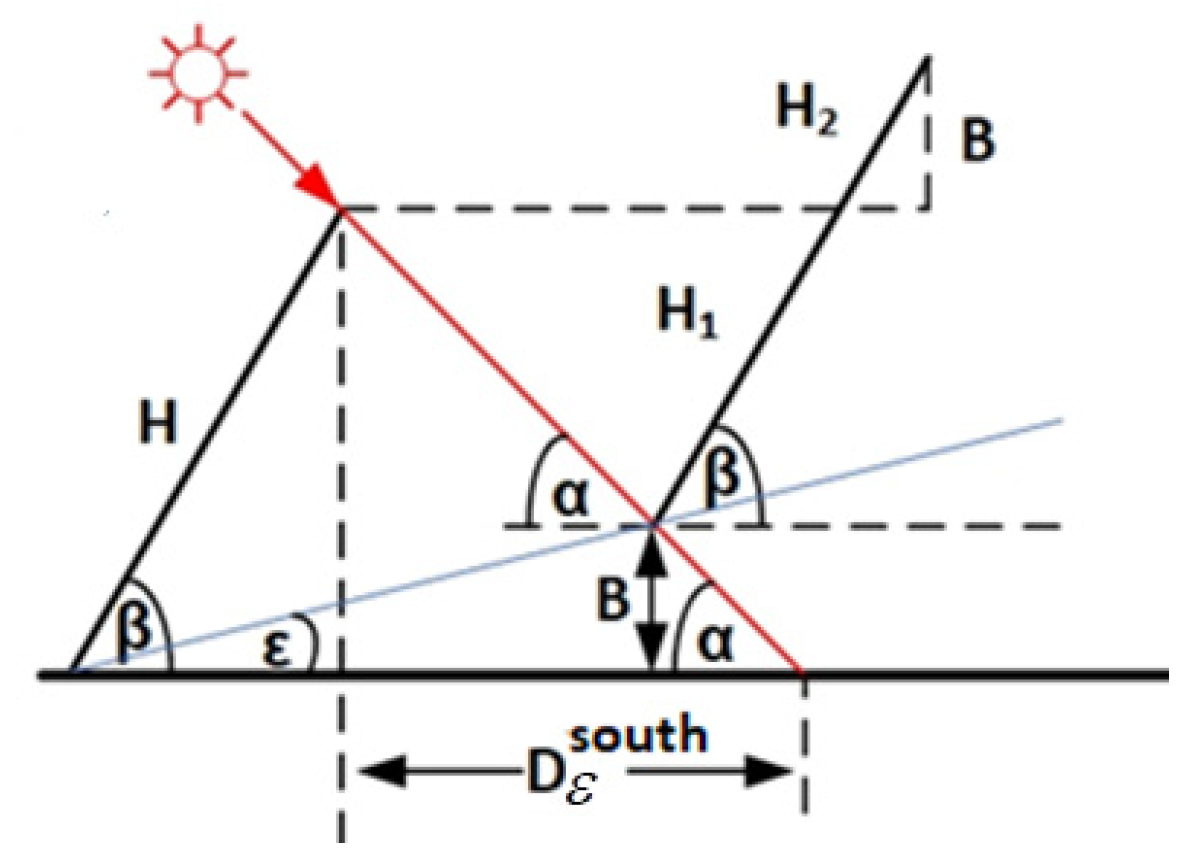
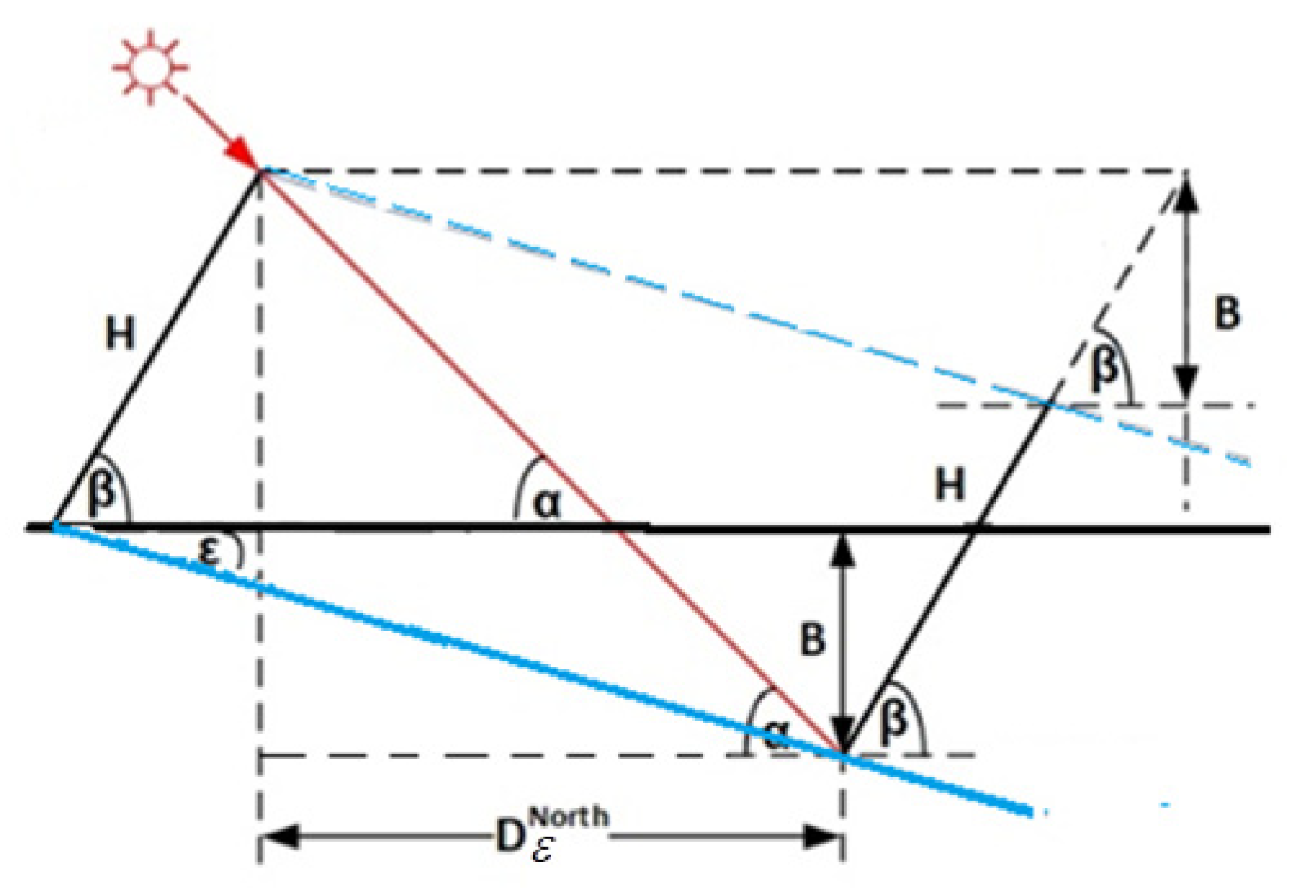



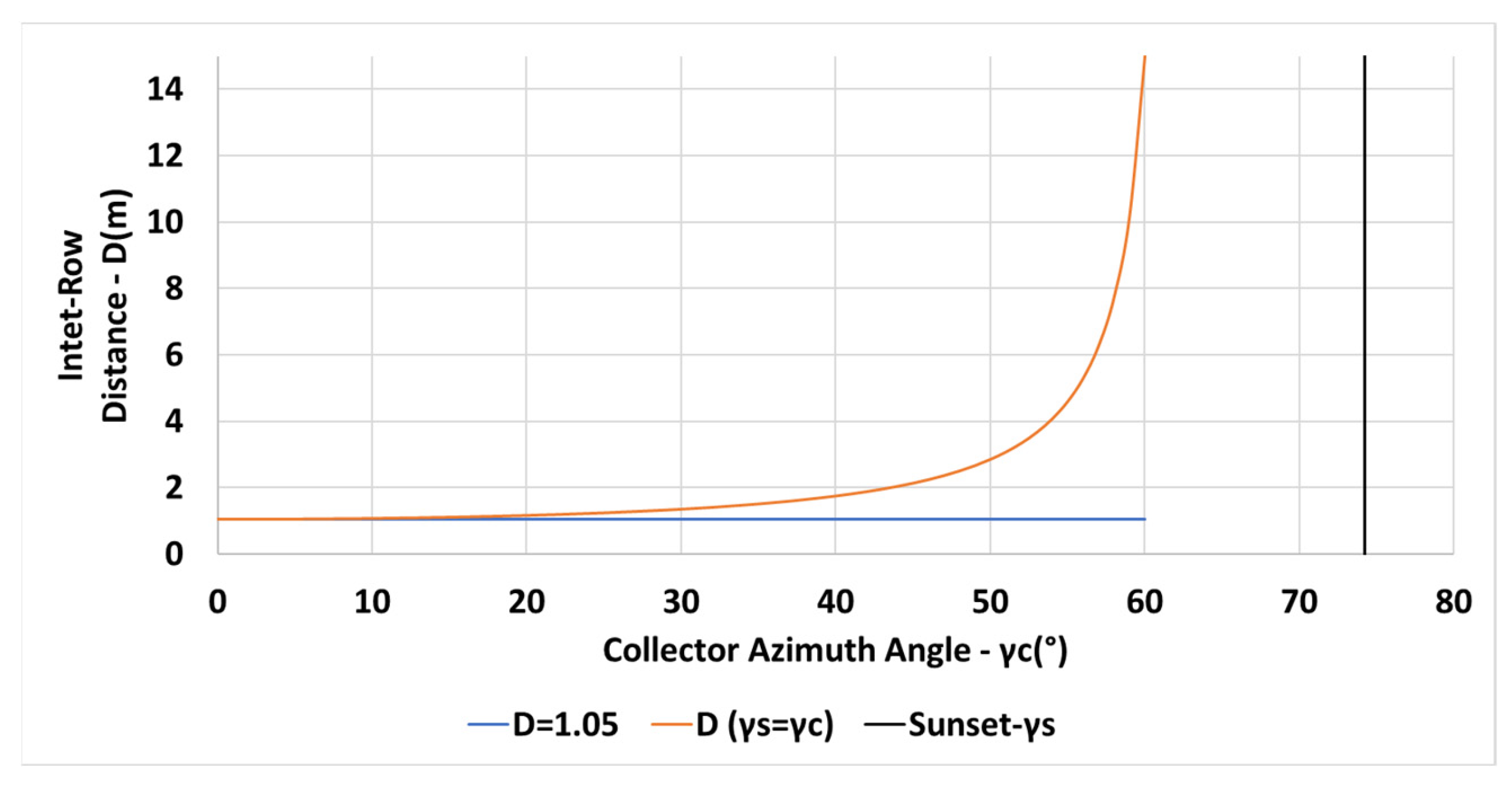
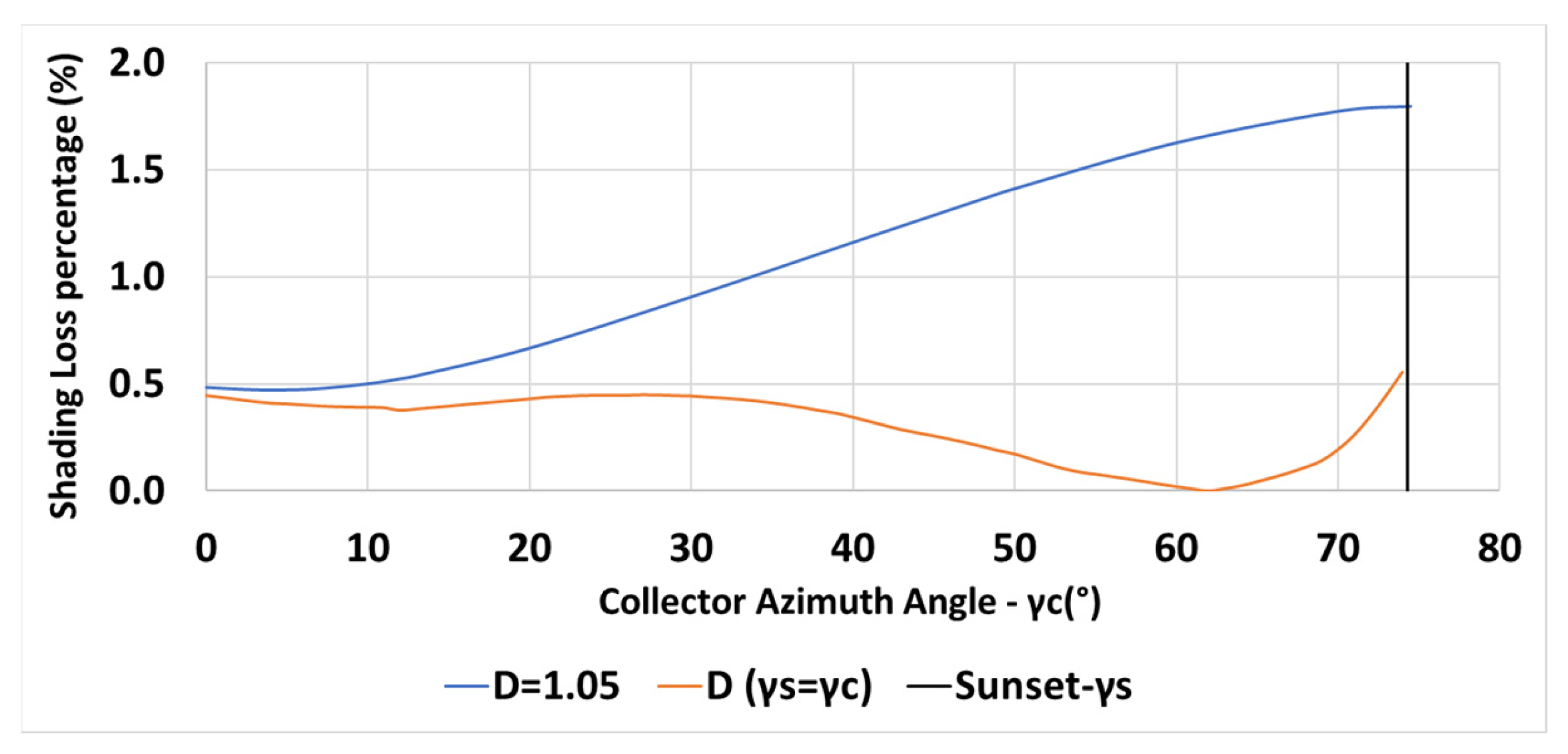
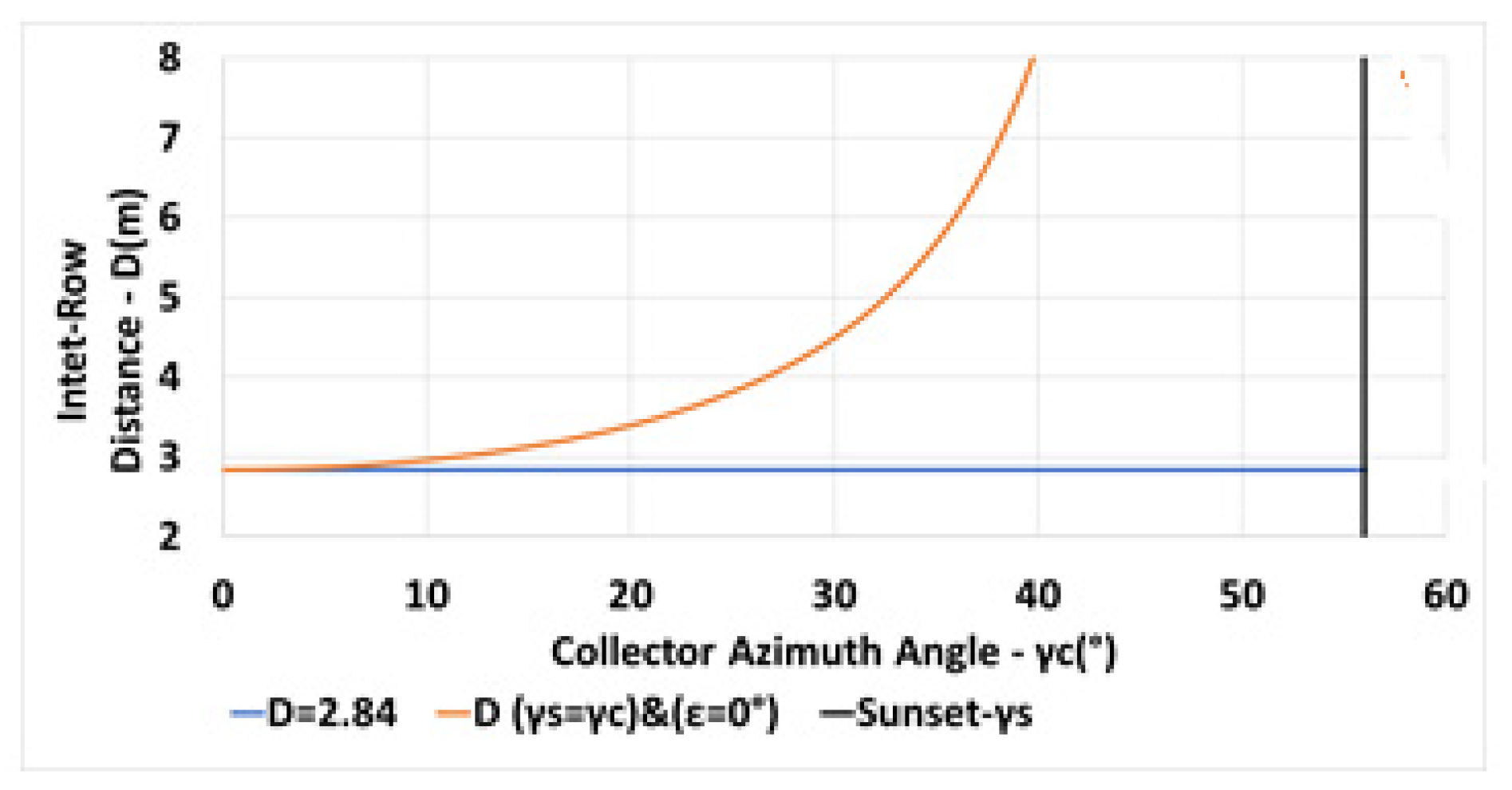
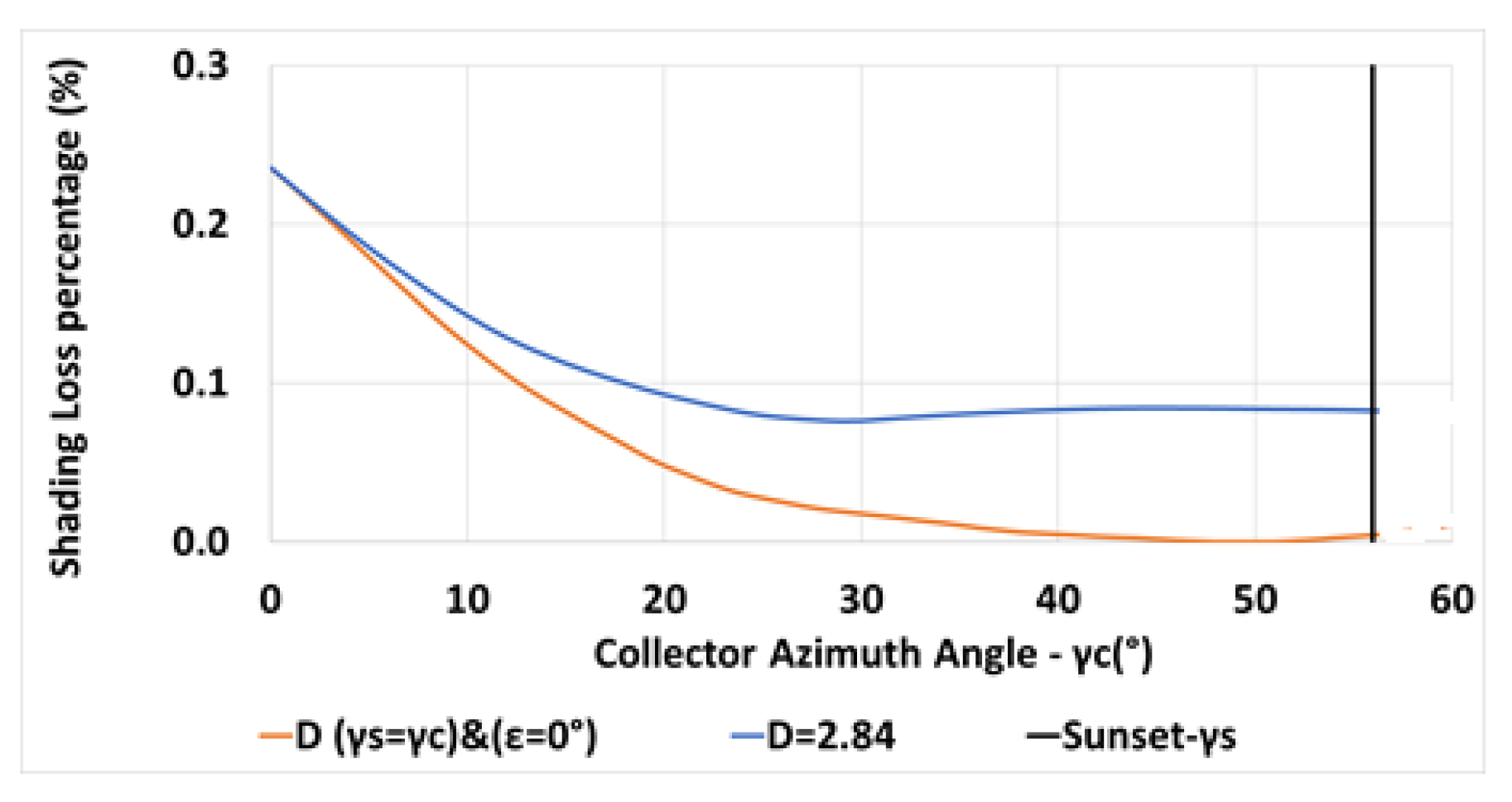
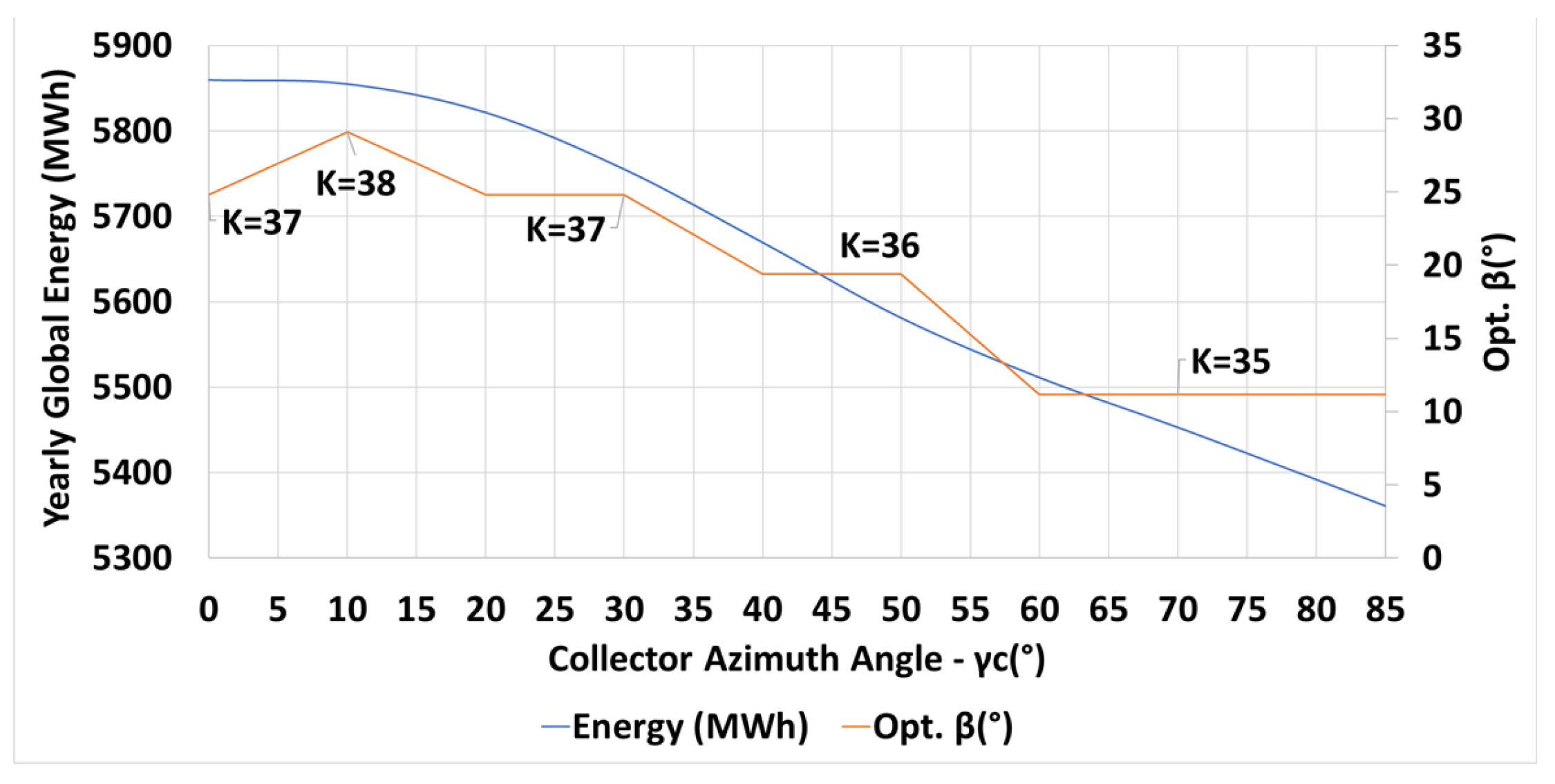
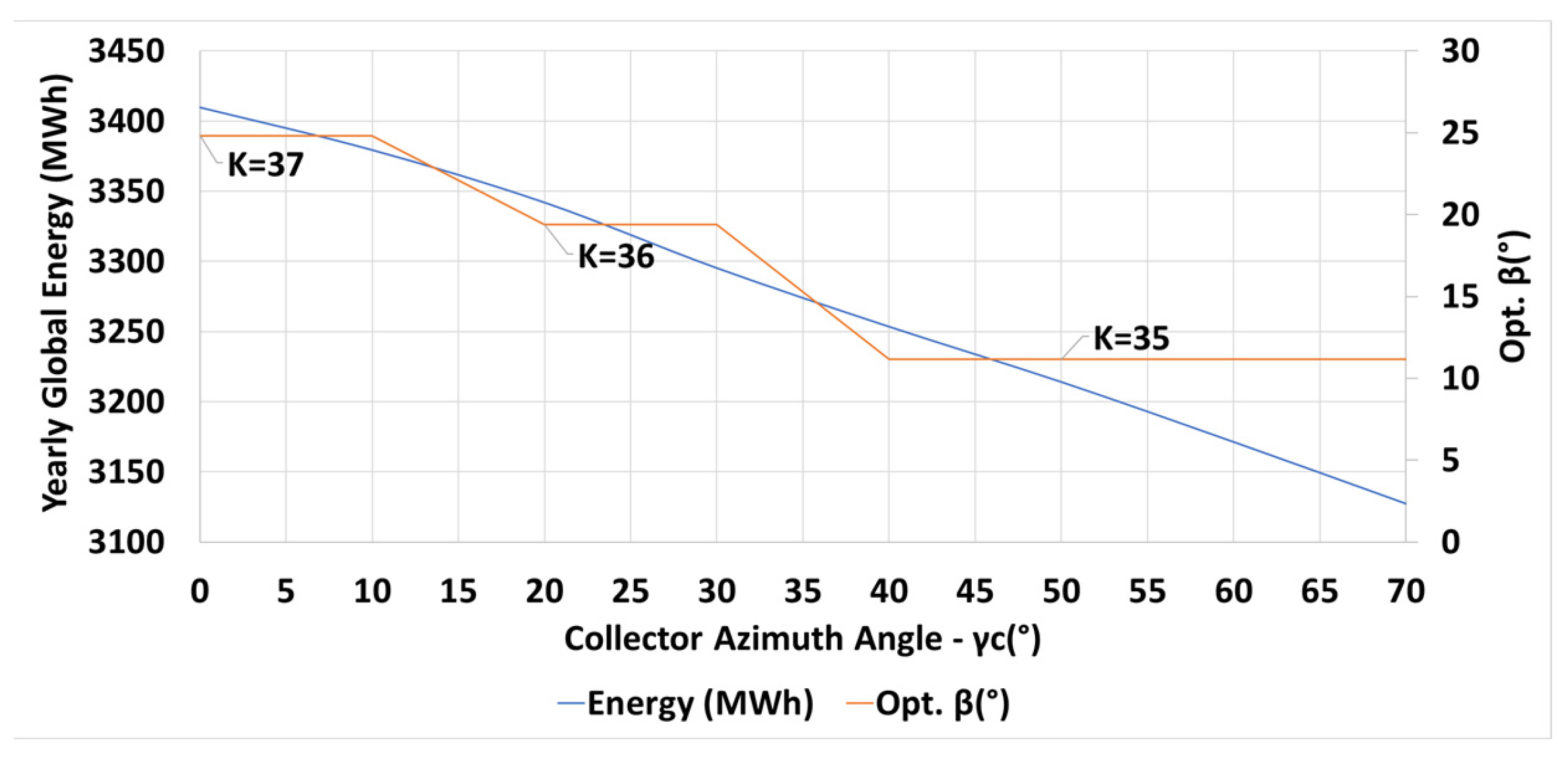
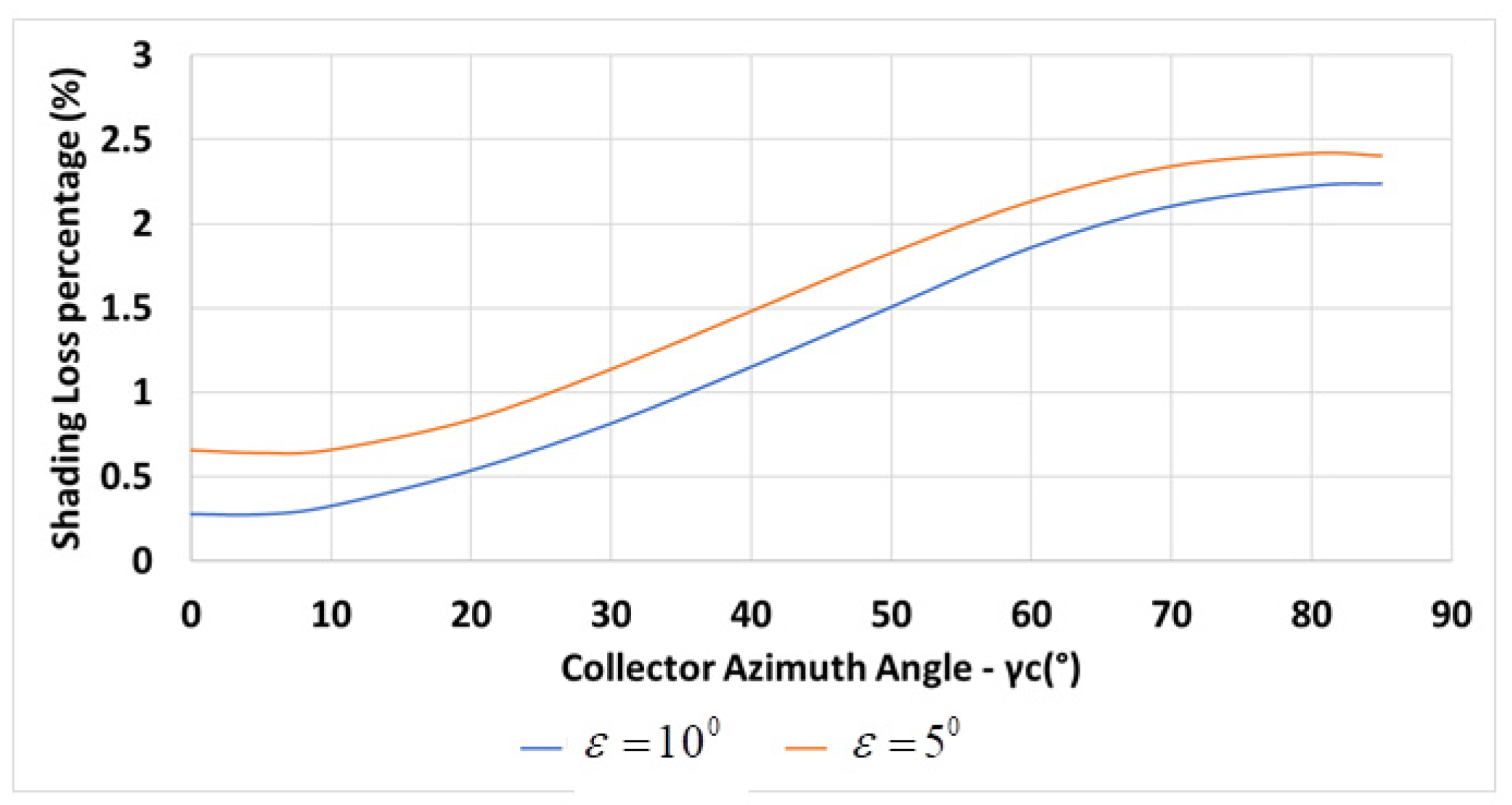
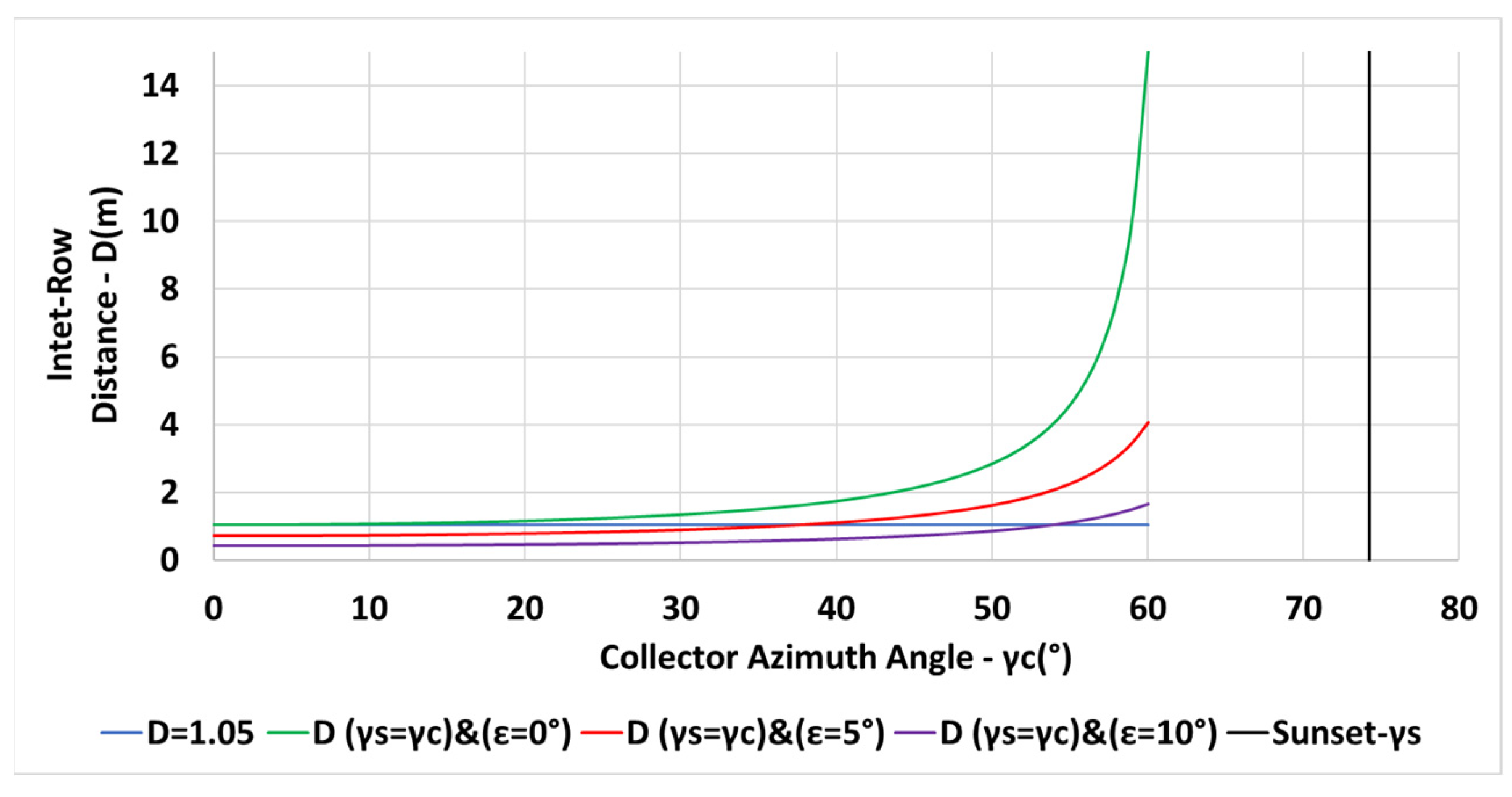
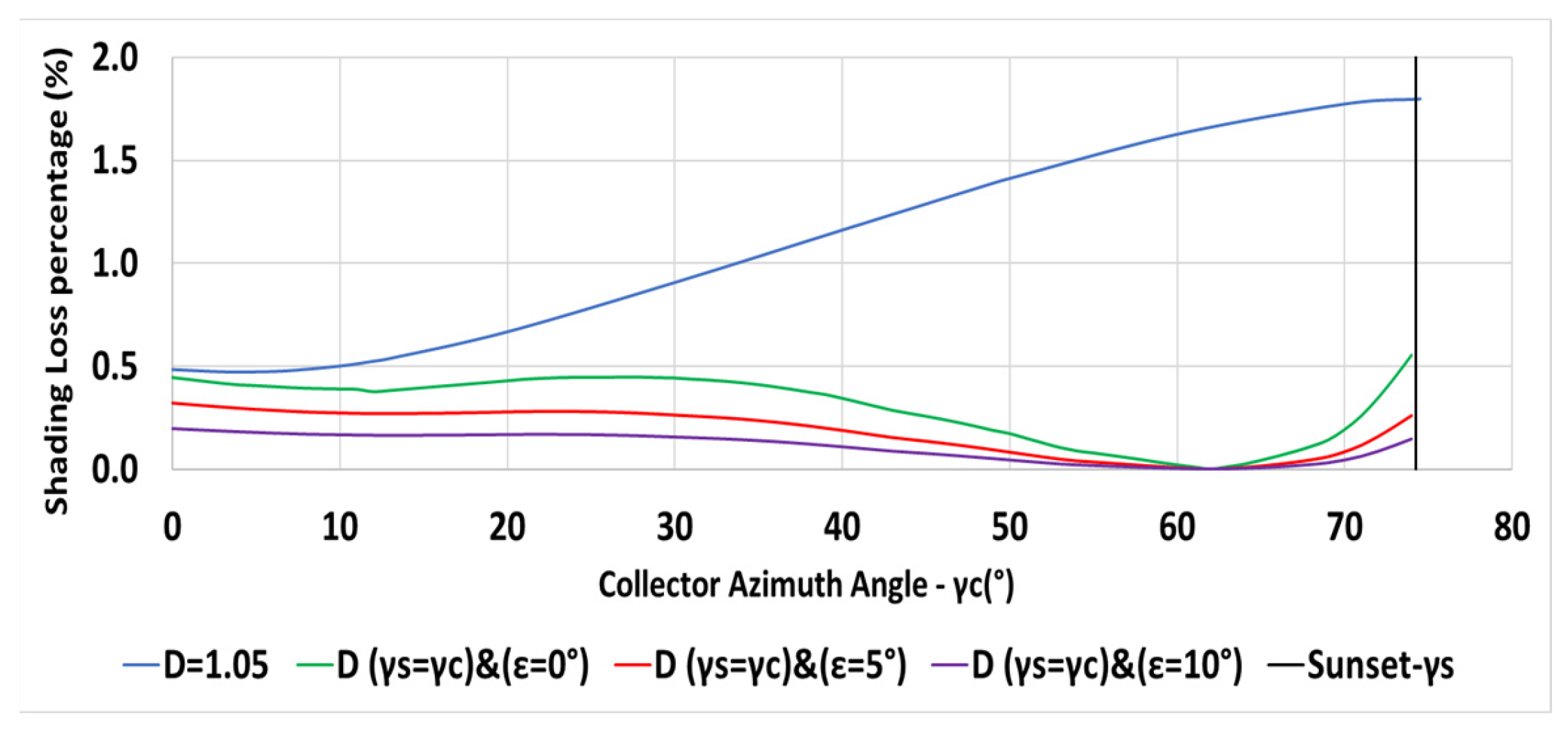
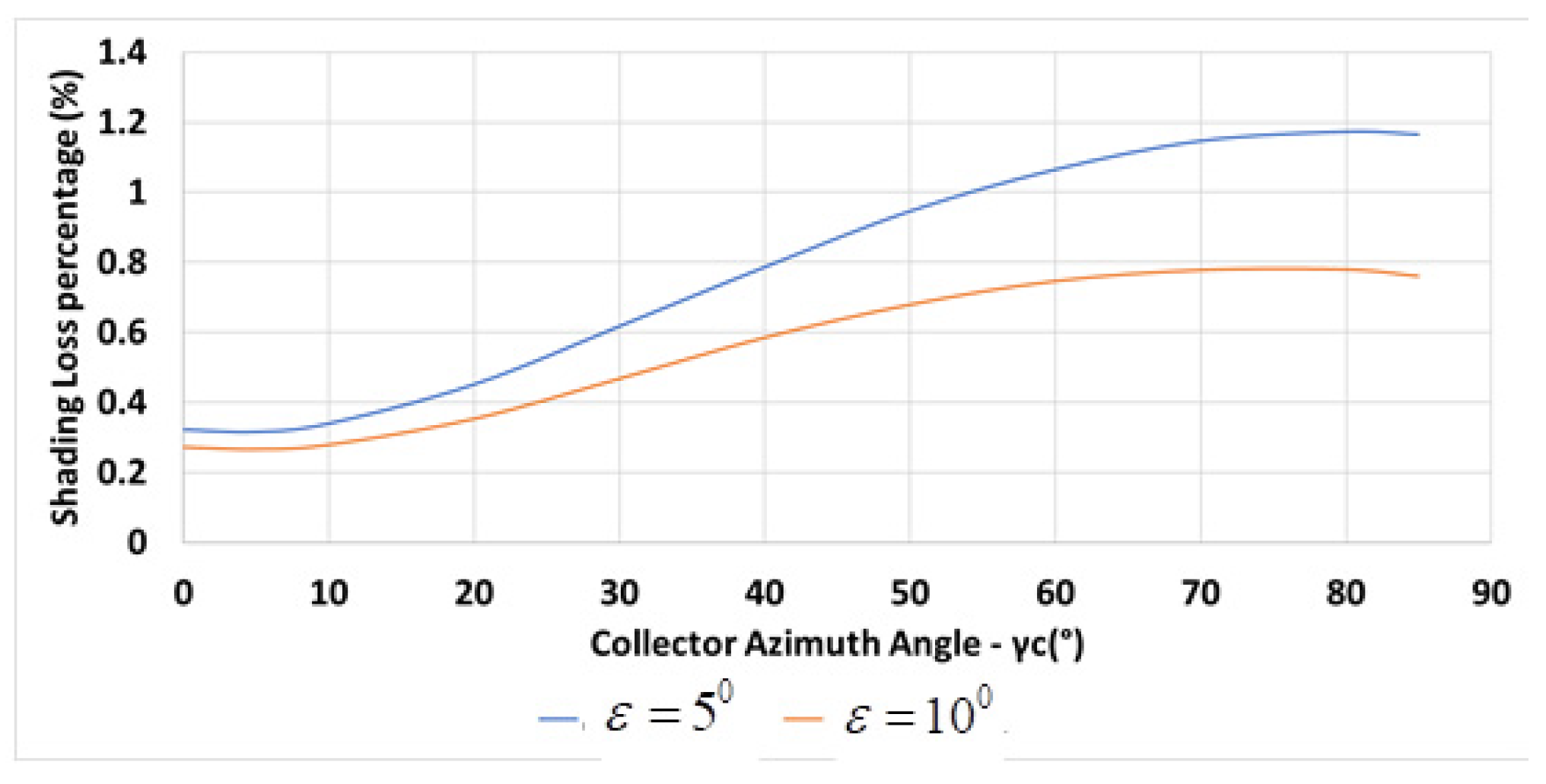

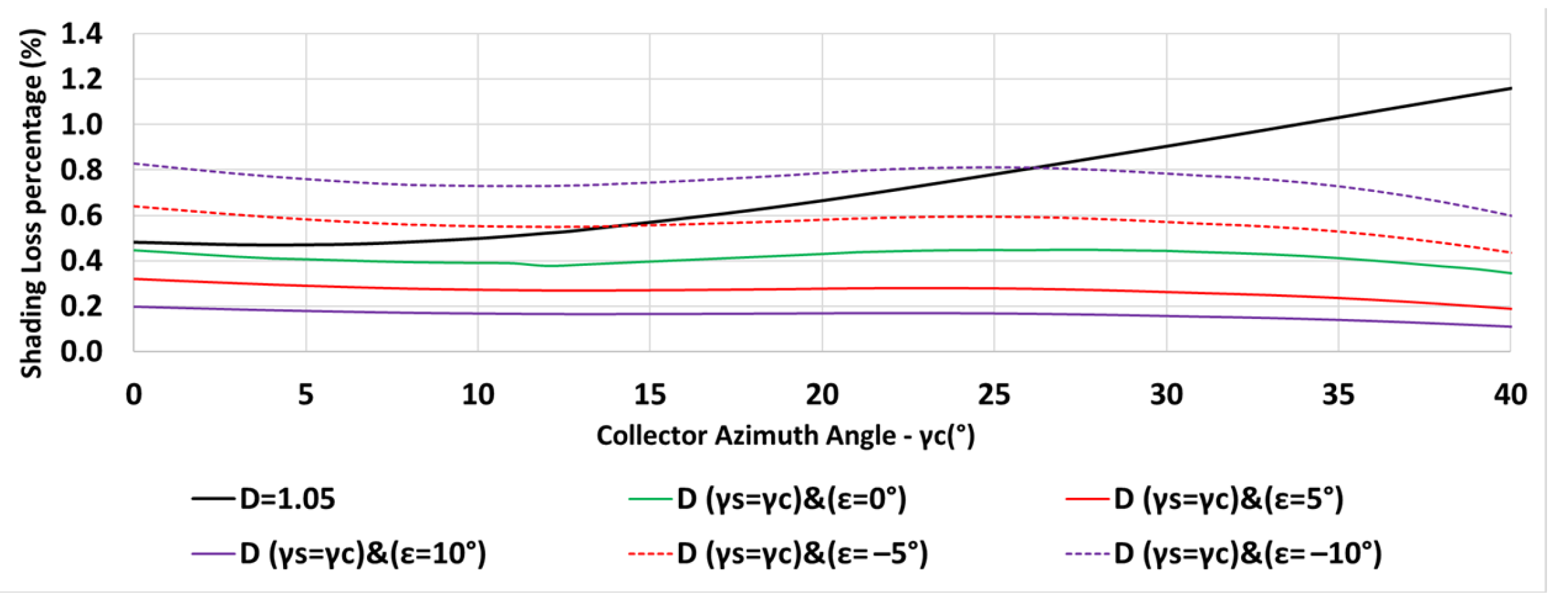
Disclaimer/Publisher’s Note: The statements, opinions and data contained in all publications are solely those of the individual author(s) and contributor(s) and not of MDPI and/or the editor(s). MDPI and/or the editor(s) disclaim responsibility for any injury to people or property resulting from any ideas, methods, instructions or products referred to in the content. |
© 2023 by the authors. Licensee MDPI, Basel, Switzerland. This article is an open access article distributed under the terms and conditions of the Creative Commons Attribution (CC BY) license (https://creativecommons.org/licenses/by/4.0/).
Share and Cite
Aronescu, A.; Appelbaum, J. The Effect of Collector Azimuth on Inter-Row Shading in Photovoltaic Fields—A Comprehensive Point of View. Energies 2023, 16, 4876. https://doi.org/10.3390/en16134876
Aronescu A, Appelbaum J. The Effect of Collector Azimuth on Inter-Row Shading in Photovoltaic Fields—A Comprehensive Point of View. Energies. 2023; 16(13):4876. https://doi.org/10.3390/en16134876
Chicago/Turabian StyleAronescu, Avi, and Joseph Appelbaum. 2023. "The Effect of Collector Azimuth on Inter-Row Shading in Photovoltaic Fields—A Comprehensive Point of View" Energies 16, no. 13: 4876. https://doi.org/10.3390/en16134876
APA StyleAronescu, A., & Appelbaum, J. (2023). The Effect of Collector Azimuth on Inter-Row Shading in Photovoltaic Fields—A Comprehensive Point of View. Energies, 16(13), 4876. https://doi.org/10.3390/en16134876




